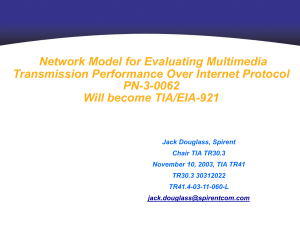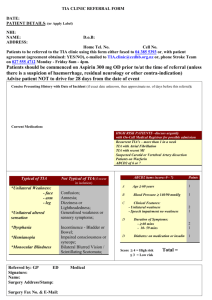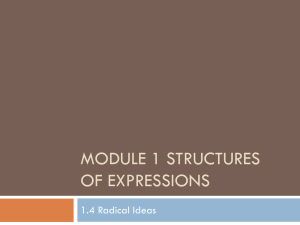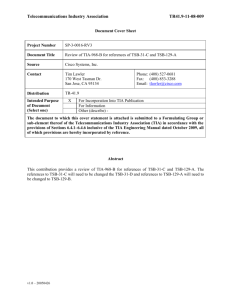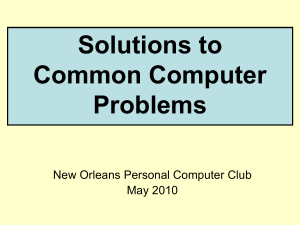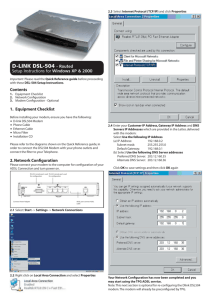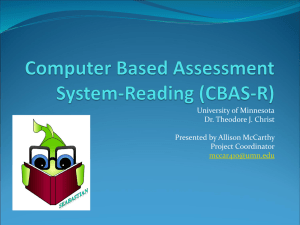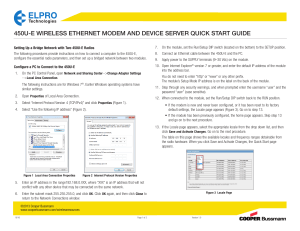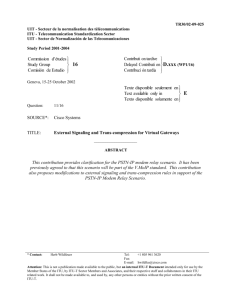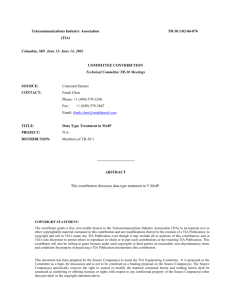Flow Control - Telecommunications Industry Association
advertisement
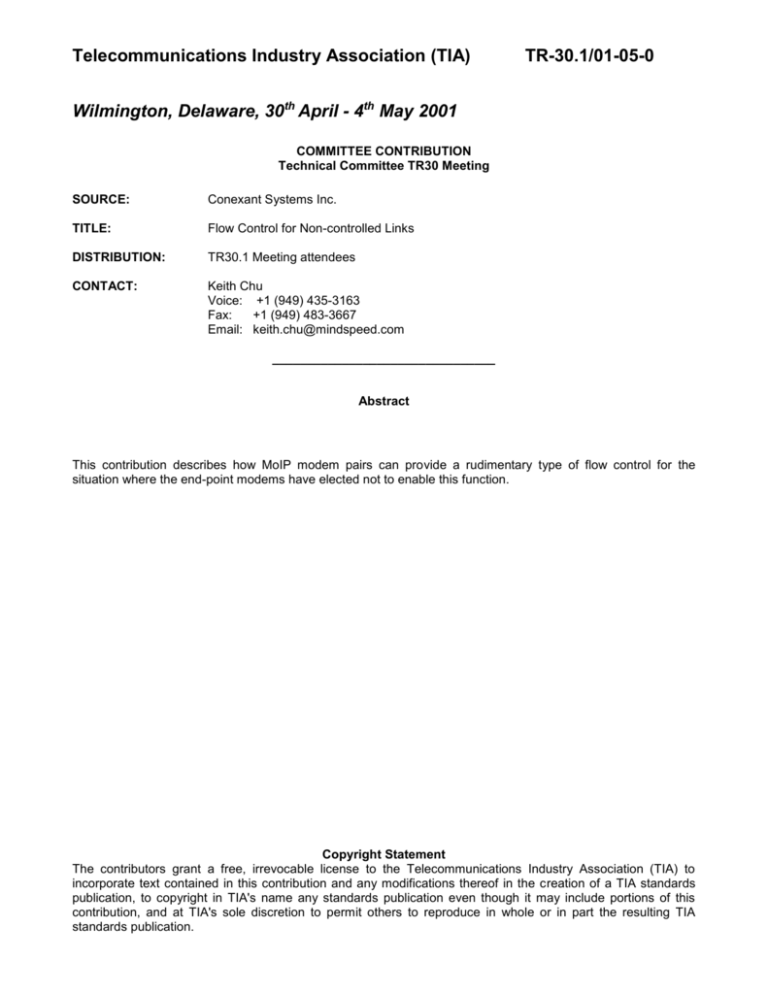
Telecommunications Industry Association (TIA) TR-30.1/01-05-0 Wilmington, Delaware, 30th April - 4th May 2001 COMMITTEE CONTRIBUTION Technical Committee TR30 Meeting SOURCE: Conexant Systems Inc. TITLE: Flow Control for Non-controlled Links DISTRIBUTION: TR30.1 Meeting attendees CONTACT: Keith Chu Voice: +1 (949) 435-3163 Fax: +1 (949) 483-3667 Email: keith.chu@mindspeed.com ________________________________ Abstract This contribution describes how MoIP modem pairs can provide a rudimentary type of flow control for the situation where the end-point modems have elected not to enable this function. Copyright Statement The contributors grant a free, irrevocable license to the Telecommunications Industry Association (TIA) to incorporate text contained in this contribution and any modifications thereof in the creation of a TIA standards publication, to copyright in TIA's name any standards publication even though it may include portions of this contribution, and at TIA's sole discretion to permit others to reproduce in whole or in part the resulting TIA standards publication. Introduction This contribution describes how MoIP modem pairs can provide a rudimentary type of flow control for the situation where the end-point modems have elected not to enable this function. For MoIP scenarios 2a, 3, 4 and 5 the link layer flow control is negotiated locally between the modem/gateway pairs. In each of these cases it is the flow control function that determines the throughput of data end to end. Flow control is important if the modem pairs connect at either different modulations or data rates. An application that makes extensive use of proprietary or even no link layer protocols is that of gaming. Her in order to save on end-to-end latency flow control, ARQ and compression may be disabled. This contribution provides two mechanisms by which if no protocol is negotiated between the gateway/modem pairs that the throughput problem can be significantly mitigated. Possible methods of mitigating lack of protocol 1. After full data mode is established, the gateways examine the data rates and rate renegotiate (or retrain if necessary) such that the M1 transmit data rate is ≤ than M2 receive data rate and M2 transmit data rate is less than M1 receive data rate. 2. Flow control between modems can be achieved by using rate renegotiations as a mechanism to slow down a remote transmitter. Both of the above techniques described above can be used either independently or together to mitigate the net effects of no flow control. If no data compression is negotiated across the link, then the simplest solution is maintain this status quo. There does not seem to be any additional advantage of adding compression just for the gateway to gateway portion and it only adds to the latency, which is against the intent for not enabling it in the first case. Summary This contribution provides some ideas on how to handle situations whereby no link layer protocol is negotiated between gateway/modem pairs. ___________________
